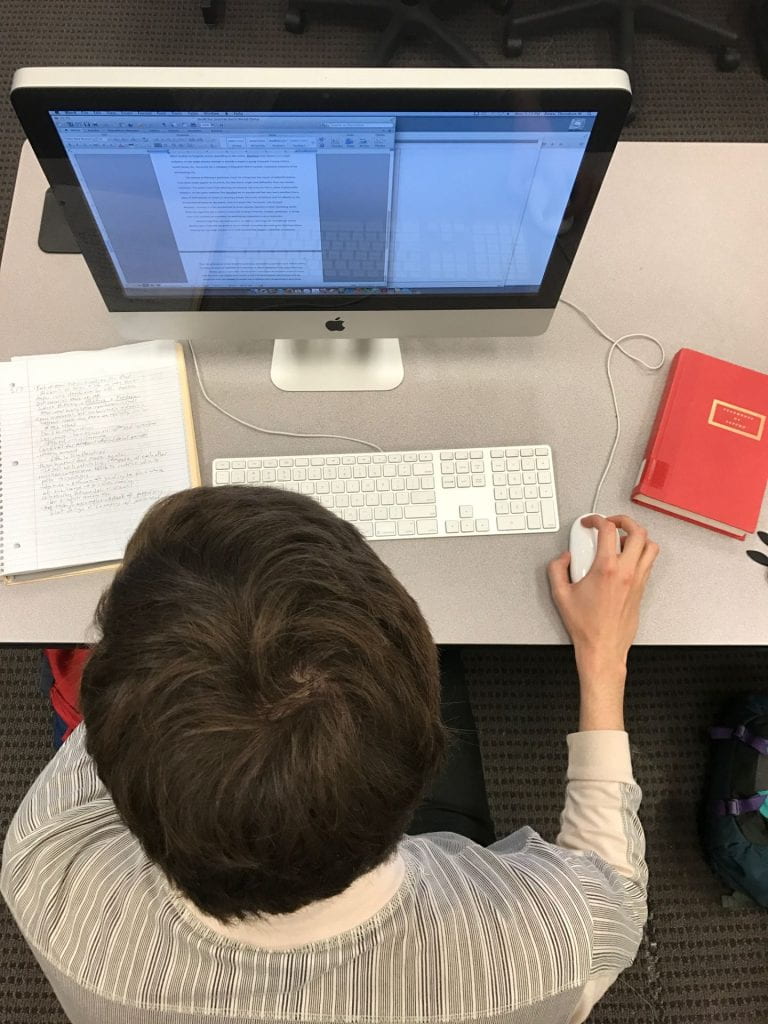
At first glance, the differences between the New York Times and Buzzfeed are evident: one has the appearance of a serious publication with headlines referring to events of international political theater; the other entertains with allusions to pop culture and memes. But are the two really that far apart?
Buzzfeed now has a team of journalists that interview high-level politicians—including the President—while breaking stories before more traditional sources. Meanwhile, the New York Times has sniped some of Buzzfeed’s reporting strategies, as readers can now find “listicles” integrated into older sections of the paper.
News no longer exists in its own sphere, separated from the sorts of entertaining articles sought by those online.
Additionally, the Internet, encompassing a larger network of social media, blogs, and so on, encourages massive amounts of competition between who receives attention.
What does this influx of new media mean for professional writers? Is the contemporary field of writing favorable for the professional writer and, if not, how do they push back?
Professional writing obviously extends into a number of various areas, but this essay will focus on a specific company’s “voice” in order to express an ideal. Not only do differing businesses require a variety of voices, the brand itself may necessitate numerous voices within the organization.
Thus, professional writers should expect to create a specific voice depending on what is being written. For instance, an article regarding a new restaurant near a promoted apartment complex can be more playful if the restaurant is family-friendly as opposed to something more elegant, assuming the restaurant is of a higher quality.
The example is unambiguous, but imagine juggling varying social strata in a single article. Think of the overarching audience: who is the key reader? From there, attempt to either localize or highlight details depending on the article. Buzzfeed must connect to a larger audience, so the target articles attempt to include a massive group of people via pop culture, social issues, etc. An article for a company’s blog does well to include communal elements of the surrounding city.
Attempts to frame a particular voice for a blog can run into issues of authorial erasure. The issue comes from churning out material that does not have a sense of personality behind it. These days, websites like Buzzfeed are so popularized that they merit parodies, thus a sense of individuality is unique in carrying a brand. Obviously guidelines must be adhered to, but an injection of humor by the author, even if it seems like “too much,” can be good.
Working on your own interests manifests a more interesting article, while also signaling that you have a voice that is unique from the company guidelines. A strong voice is as necessary as experience in establishing credentials to show employers.
Maneuvering from one writing job to another is a daunting task. Professional writers should expect to assume any position that is offered. Careers in journalism have become much more fluid than they used to be, meaning that one might be hired to write material that engages a multitude of audiences. Thus, the professional writer should be sensitive to contemporary political events with the ability to engagage culturally or with an adaptation to the latest technology.
Finally, professional writers should not feel restricted by the free-form world of writing jobs that exist. I do not necessarily think that jumping between assignments from different companies is pragmatic—instead, this constant freelance maneuvering is more a means of survival.
However, the sorts of shifts one must make in order to put food on the table allows for a specific working of style in developing a unique, professional voice.
Companies are attempting to brand themselves now more so than ever; language helps develop the company’s ideology.
There might exist a greater question of morality for the professional writer: when language holds such persuasive power (perhaps more intimately on an individual-to-individual basis than ever before), how should it be aligned and how should it be used?


